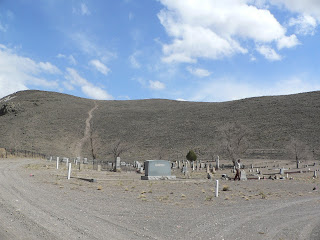In 1976 Beryl joined the Daughters of the Utah Pioneers (DUP),
Hanauer Camp.
She was proud of her ancestors and cherished her
pioneer heritage.
It is evident from this well-used list of ancestors,
she turned here frequently to keep track of family members, and their names.
After Pete's retirement, they frequently vacationed with friends,
Harvey and Veda Danks (Harvey must have taken the picture).
In 1962 Richard, Beryl, Pete, with Ringo.
Beryl enjoyed playing the slot machines whenever they vacationed in Nevada,
and she liked to win!
In 1979 their children invited friends and family to celebrate
Pete and Beryl's fiftieth wedding anniversary.
Elizabeth is her youngest grandchild, and is shown here in 1984 near Beryl
with the family kitten on her lap.
Beryl was always the care giver. In the last few years of her life, Beryl's family had the opportunity to reverse roles with her. She lived in her daughter Marlene's home, until she passed away on December 22, 1986.
Pete passed away the following September 21, 1987.
After Beryl began receiving Social Security she had a little
money to call her own. She did with it whatever she chose, and tithing was on
the top of her list. She was a great one for stashing money in a “safe place,”
and sometimes had a difficult time remembering where it was.
A pile of books from Pete and Beryl’s house was headed to “good
will” following their passing and the sale of the home. Their son Richard rifled through the pile, retrieving
a few he could use, a good dictionary in particular. Months, or a year or more, later one of her
grandchildren picked up that dictionary to look up a word, and out fell a
hundred-dollar-bill. Forever after they searched through anything that came
from their grandparent’s house—looking for one-hundred-dollar-bills.
Part 1
Part 2
Part 3
Part 4
Bonus picture here
































+family.gif)














